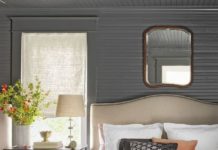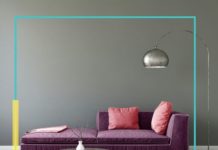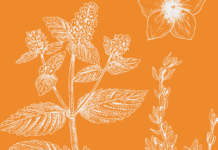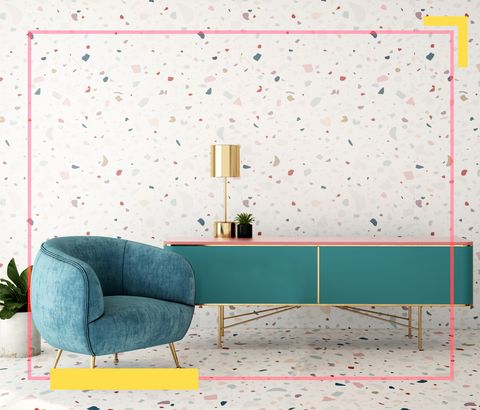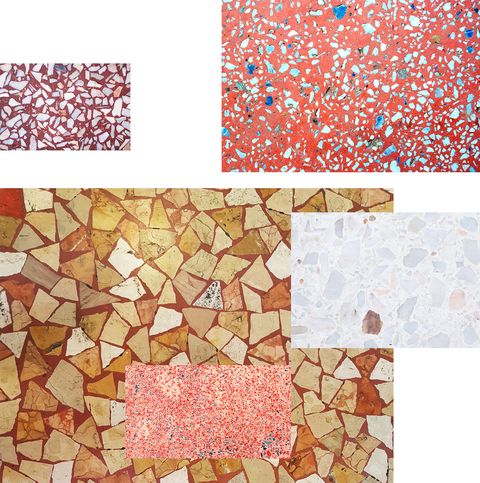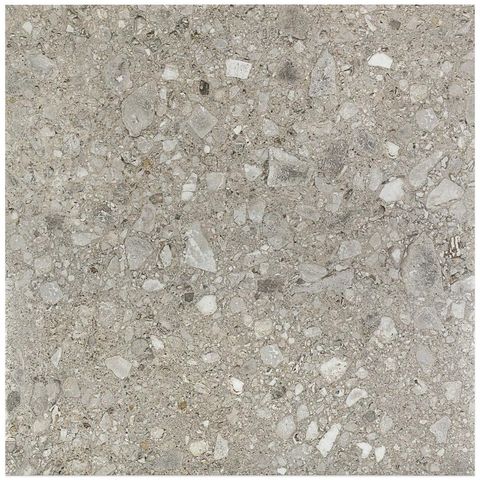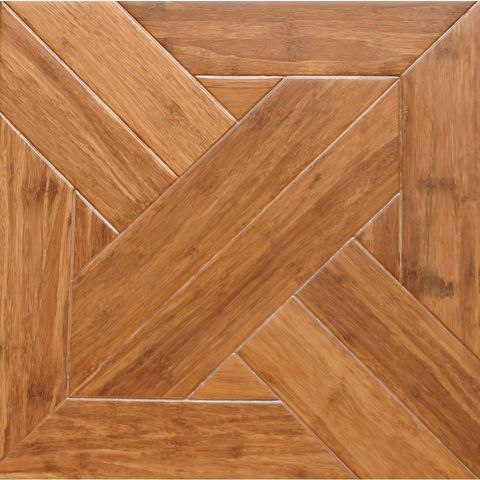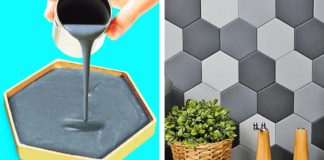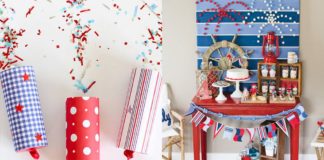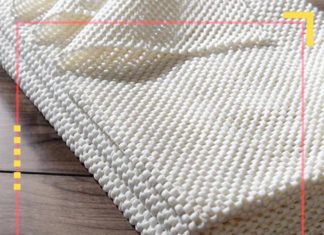“If you inherit a room with really old-fashioned wallpaper—like toile or something that’s just not your style—but then you mix it with flooring that’s really funky, like an over-dyed Persian rug, the room can actually end up looking more modern,” Mendelsohn says. “It’s taking that wallpaper out of its initial intended context and making it fresh and more useful again.” Read on to learn more about a few of our favorite retro flooring trends.
Terrazzo
Terrazzo is a durable, statement-making type of retro flooring that, in the U.S., hit peak popularity in the 1960s. It’s eye-catching while remaining subtle enough to serve as a foundation for a variety of interior stylings.
Terrazzo features chips of marble, glass, or quartz flecked into a cement or epoxy-resin base, allowing for an infinite number of color combinations and a range of size options for the chips themselves. The tiles become individual, shimmering, but understated, works of art.
Terrazzo can be poured like concrete , but most often it’s purchased and installed in tile form, making it ideal for any high-traffic area such as entryways, hallways, or laundry rooms. If you’re looking to ease into a kitschier lifestyle, terrazzo hits that sweet spot between contemporary and vintage.
Parquet
Parquet floors provide the same “everything old is new again” vibe for a home, particularly for those who are interested in installing hardwood but want a little bit more pizzazz.
Select a parquet square and see it populate below
A mid-century modern favorite, parquet flooring tiles are made by arranging pieces of hardwood in a repeating geometric pattern (the most popular is herringbone). Parquet floors already come pre-stained, can typically withstand one refinishing, and are far easier to install than traditional hardwood planks: simply glue the tiles to the level, above-grade subfloor.
Much like hardwood floors, parquet can buckle, so it shouldn’t be laid in bathrooms or other moisture-dense areas. But parquet is perfect for adding a throwback foundation to a den or living room.
Concrete or Linoleum
Kitsch also encourages a great deal of creative license, including using more basic forms of flooring in a space and adding the funky elements yourself.
“If you have concrete floors—for example, in a warehouse loft—you could repaint the floors and do something wacky with splatter painting,” Mendelsohn suggests. Concrete floors can also be successfully stained, either in a solid color or variety of colors. “Or, if you’re using a material like a linoleum, take a giant brush and do random abstract swirls. That can end up making it look like a gallery!”
And then there’s the practical side of kitsch: it’s more sustainable.
As an alternative to buying or replacing every element of a room when remodeling—new wallpaper, new hardware, new lighting fixtures—kitsch encourages repurposing and thinking outside the box to create a one-of-a-kind, mix-and-match space that’s yours, and yours alone.






